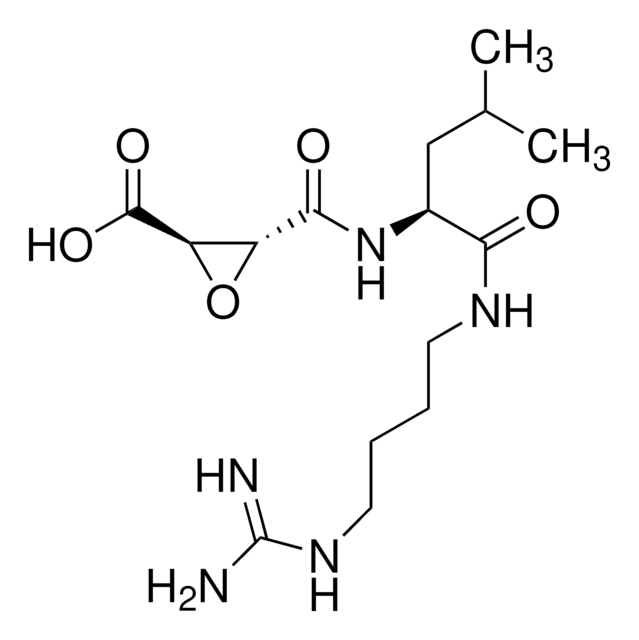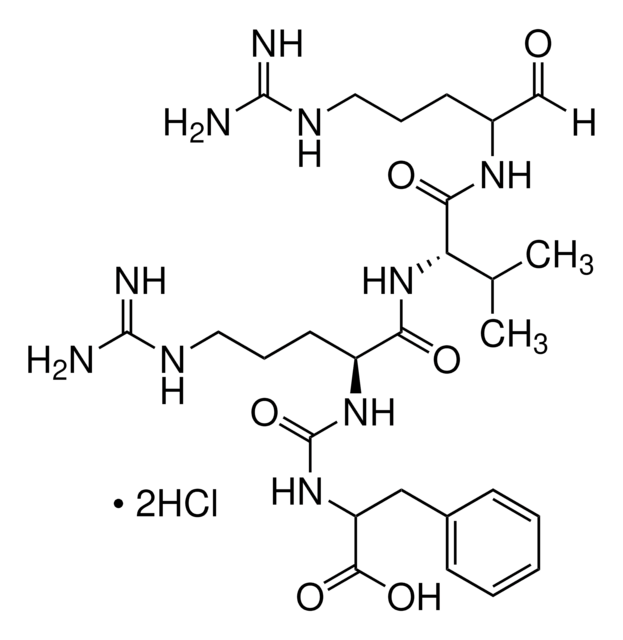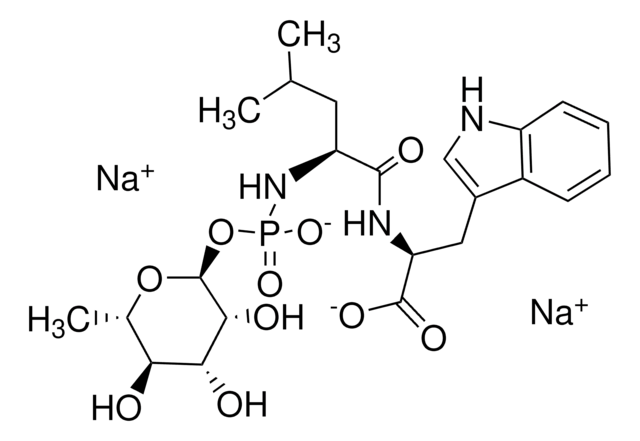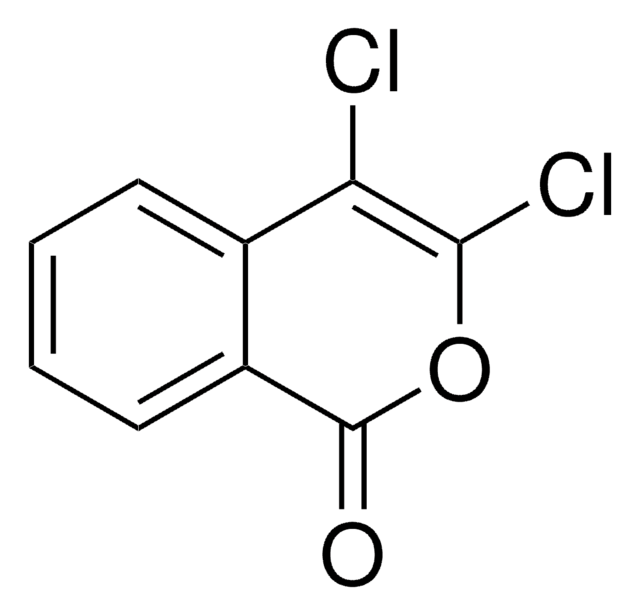Wichtige Dokumente
11004638001
Roche
Chymostatin
Synonym(e):
N-(Nα-Carbonyl-Cpd-X-Phe-al)-Phe (Cpd = Capreomycin) (Capreomycin = [S,S]-α-(2- Iminohexahydro-4-pyrimidyl) glycin)
About This Item
Empfohlene Produkte
Form
powder
Qualitätsniveau
Mol-Gew.
Mr = 607.71
Verpackung
pkg of 10 mg
Hersteller/Markenname
Roche
mp (Schmelzpunkt)
205 °C
Löslichkeit
acetic acid: soluble 20 mg/mL
Lagertemp.
2-8°C
SMILES String
OC(C(NC(NC(C1NC(NCC1)=N)C([F,Cl,Br,I]C)=O)=O)CC2=CC=CC=C2)=O
InChIKey
MRXDGVXSWIXTQL-HYHFHBMOSA-N
Suchen Sie nach ähnlichen Produkten? Aufrufen Leitfaden zum Produktvergleich
Verwandte Kategorien
Allgemeine Beschreibung
Anwendung
Biochem./physiol. Wirkung
Qualität
Alternative Formulierung
Angaben zur Herstellung
1 U chymotrypsin is inhibited to 49% of the original activity by 1.8 μg of chymostatin.
Thin-layer chromatography: butanol/methanol/H2O = 4 / 1 / 2
Working solution: Soluble in glacial acetic acid or DMSO to 20 mg/ml. Sparingly soluble in water, methanol, or ethanol. Insoluble in ethyl acetate, petroleum and ethyl ethers, hexane, or chloroform (CHCl3).
It is recommended to dissolve the inhibitor in 1% acetic acid in higher concentration and to adjust the concentration wanted with phosphate buffer, 0.05 M, pH 7.0, which is common for chymotrypsin assay.
CAUTION: DMSO (Dimethyl sulfoxide) will permeate the skin, carrying solubilized protease inhibitors. Always wear appropriate protection for eyes, skin, etc.
Storage conditions (working solution): -15 to -25 °C
Dilute solutions should be stored frozen in aliquots at -15 to -25 °C and are stable for approximately one month. Avoid repeated freezing. Growth of microorganisms should be avoided as proteases from microbial origin may hydrolyze the peptides.
Sonstige Hinweise
Lagerklassenschlüssel
11 - Combustible Solids
WGK
WGK 1
Flammpunkt (°F)
Not applicable
Flammpunkt (°C)
Not applicable
Hier finden Sie alle aktuellen Versionen:
Besitzen Sie dieses Produkt bereits?
In der Dokumentenbibliothek finden Sie die Dokumentation zu den Produkten, die Sie kürzlich erworben haben.
Kunden haben sich ebenfalls angesehen
Global Trade Item Number
| SKU | GTIN |
|---|---|
| 11004638001 | 4061838693761 |
Unser Team von Wissenschaftlern verfügt über Erfahrung in allen Forschungsbereichen einschließlich Life Science, Materialwissenschaften, chemischer Synthese, Chromatographie, Analytik und vielen mehr..
Setzen Sie sich mit dem technischen Dienst in Verbindung.














